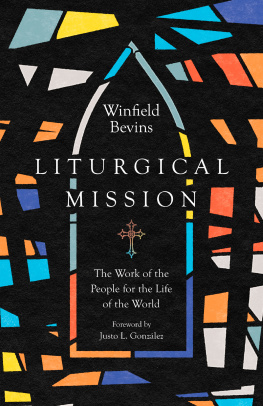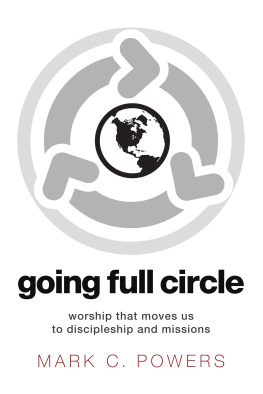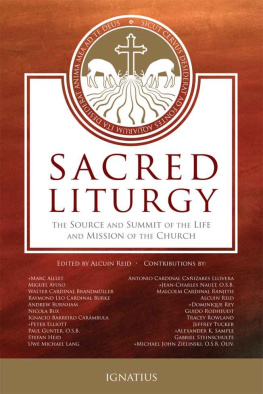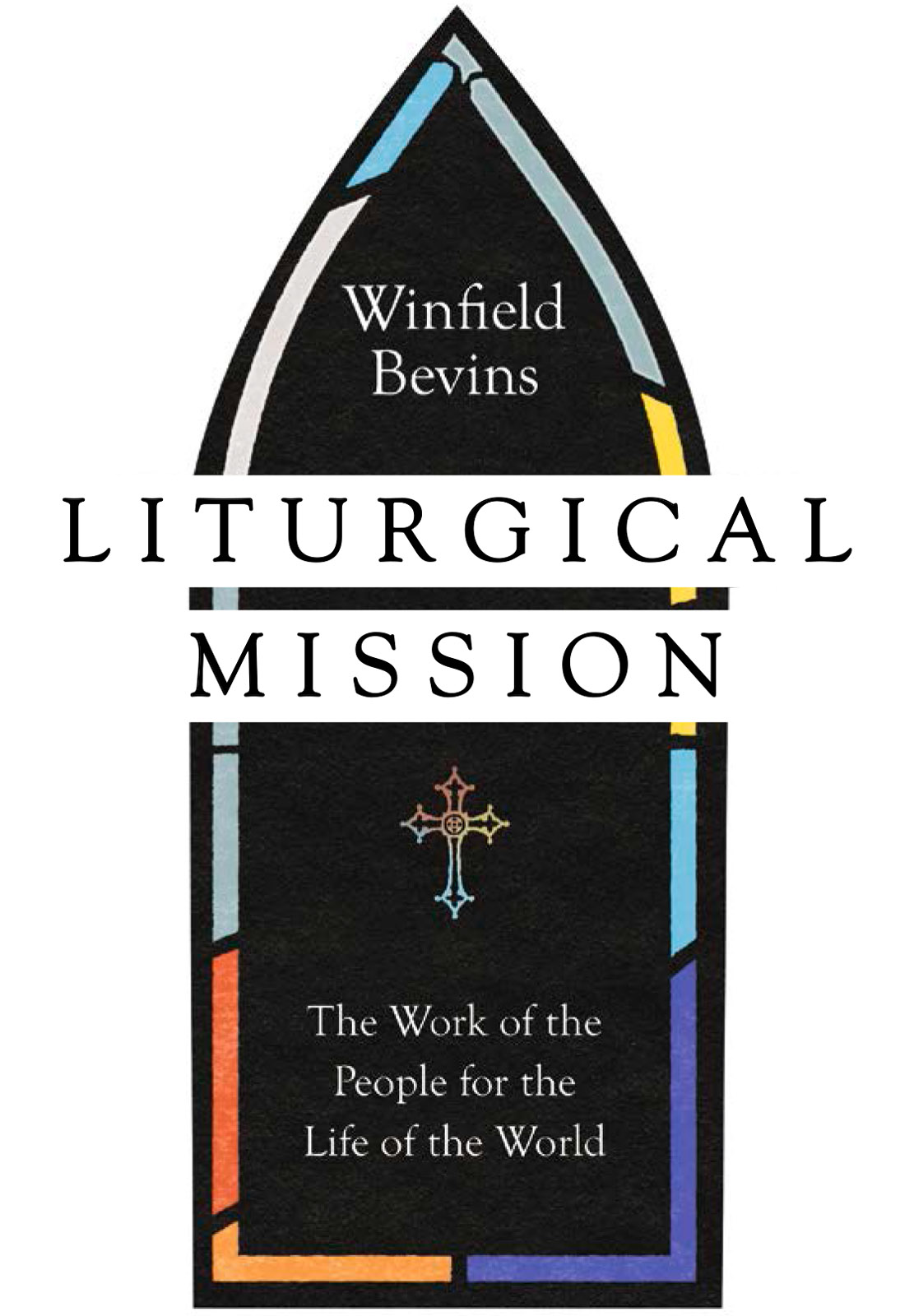Sommaire
Pagination de ldition papier
Guide
Foreword by
Justo L. Gonzlez
 InterVarsity Press
InterVarsity Press
P.O. Box 1400 | Downers Grove, IL 60515-1426
2022 by Winfield Bevins
All rights reserved. No part of this book may be reproduced in any form without written permission from InterVarsity Press.
InterVarsity Press is the publishing division of InterVarsity Christian Fellowship/USA. For more information, visit intervarsity.org.
Scripture quotations, unless otherwise noted, are from The Holy Bible, English Standard Version, copyright 2001 by Crossway Bibles, a division of Good News Publishers. Used by permission. All rights reserved.
While any stories in this book are true, some names and identifying information may have been changed to protect the privacy of individuals.
The publisher cannot verify the accuracy or functionality of website URLs used in this book beyond the date of publication.
Cover design and image composite: David Fassett
ISBN 978-1-5140-0155-4 (digital)
ISBN 978-1-5140-0154-7 (print)
This digital document has been produced by Nord Compo.
In grateful memory of
ROBERT E. WEBBER AND THOMAS C. ODEN,
who helped me discover the way of liturgical mission
Foreword
JUSTO L. GONZLEZ
MORE THAN SIXTY YEARS AGO, when I was still a graduate student at Yale, I had the opportunity to attend a workshop on the liturgical renewal. At the beginning of the workshop, each participant was invited to offer two reasons why we were there. When my turn came, my two reasons were: I live by worship, and Worship is killing me! Today, I would still say the same, although now I would mean something different, and the subject of my sentences would probably be more corporate: The church lives by worship. Worship is killing the church.
At the time of that seminar, I was centering my studies on the history of Christian doctrine and theology. In the course of those studies, I soon came across the well-known principle lex orandi, lex credenda, which could be loosely translated as the rule of worship is the rule of belief. As a seminary student, I was well aware that the church has repeatedly sought to express its belief in its worship. This is why during the Reformation there was so much debate about worship and the forms it should take. What was new to me was that the is in that phrase runs in both directions: doctrine shapes (or should shape) worship, and worship shapes (and does shape) doctrine. The church had been worshiping Father, Son, and Holy Spirit long before it developed a doctrine of the Trinity; and it had long been worshiping Jesus as both divine and human long before the christological debates regarding the union of divinity and humanity in Christ. In other words, the relation between worship and theology is like a line, A-B, in which influences run both from A to B and from B to A. Theology without worship is meaningless; and worship without theology is baseless.
But, as this book amply shows, such a line, A-B, is too flat. It is as if the church existed only to worship and to do theology; to think about God and to praise God. The church does not exist for itself and for God, but also for Gods worlda world that is made and is sustained by the Word of God, and a world to which God send Gods own Word made flesh. Generally speaking, this is what we usually mean by mission.
In Liturgical Mission, Winfield Bevins has written a timely book that helps the church rediscover the vital relationship between worship, theology, and mission. Thus, rather than a line A-B, we need a triangle, A-B-C, in whichas in the Trinitythere is no first and no last, and yet the three are certainly different. As this book clearly states, if everything is mission, nothing is mission. Likewise, if everything is theology, it is not Christian theology; if everything is worship, it is not Christian worship.
Here again, as in the case of lex credendi, lex orandi, the movement among these three runs in both directions, clockwise and counterclockwise: A-B-C-A-B-C and C-B-A-C-B-A. Theology shapes worship, which in turn shapes mission, which then shapes theology... and mission shapes worship, which in turn shapes theology, which then shapes mission...
One may enter this circle at any point. What is important is not what comes first, but rather how any of the threeworship, theology, and missionimpacts and is impacted by the other two. This is why there must be both a clockwise movement and simultaneous counterclockwise movement. Such movements are not only simultaneous, but also never completed. In the present life we shall never have the right and final theology with which to shape perfect worship and then solve all the difficult issues of the world. In a pandemic, for instance, part of mission is joining the world in pain and hope, in protest and submission. This then spills into worship, where we recover the prayer of the faithful, interceding for this world whose problems we cannot solve. Our reflection on this prayer leads us to rediscover some of the deeper meanings of the priesthood of all believers. Such reflection lets us see that part of the mission of the church is to pray for the worldparticularly for those who do not pray. And so the circle continues.
Or one may take another example. When years ago I declared that worship was killing me, part of what I meant was that I found much worship shallow in theology and irrelevant in mission. As I have later observed the life of the church and been part of it, I have learned that to boast of the rightness or the depth of my theology is to deny the greatness and the mystery of the God about whom and with whom I am supposed to be theologizing. I have also learned that to declare worship as irrelevant in mission is to forget that part of the mission of the church is to pray for the worldto be a priestly people bringing this tortured world to the throne of the Most High. And I have also learned that to complain that any form of worship is killing me is to forget that death and new life are essential to Christian worship. If worship is killing me, this may be the continuation of what took place at my baptism where I died and was raised again with Christ. Knowing myself as I do, I know that I need constant killing and raising into new life! This is what worship, all forms of worshipso-called traditional and so-called contemporary, so-called high and so-called low, in loud decibels and in quiet meditationdoes for me, for the church, and for the entire world over and over again, until at last in glory we shall know as we are known.
Introduction
The church has missionary power in direct proportion to its liturgical integrity.
STANLEY HAUERWAS
WHEN MOST CHRISTIANS THINK of worship and liturgy, mission is not the first thing that comes to mind. We mostly agree that worship is central to who we are and that it is an essential aspect of what it means to be a believer. But while we may agree on the centrality of worship for the Christian life, we dont all agree on its role in connection with mission.
One of the ways I have come to appreciate the connection between liturgy and mission is through the idea of spiritual breathing. Just as physical breathing is essential to the body, so the Christian life requires a spiritual breathing that involves worship and mission. Pope Francis reminds us,









 InterVarsity Press
InterVarsity Press